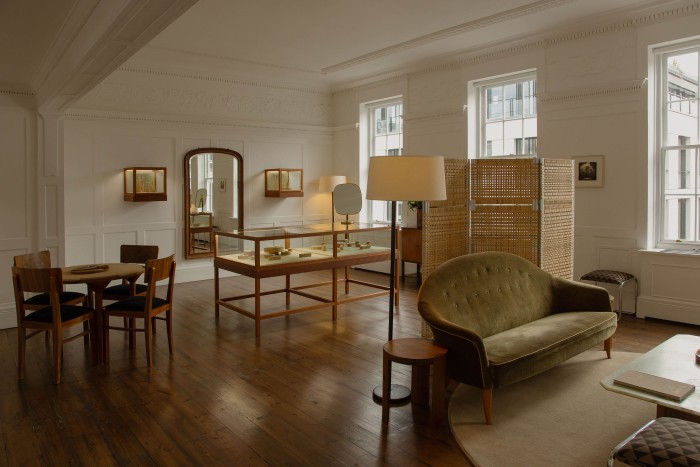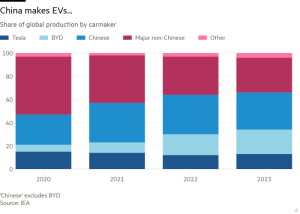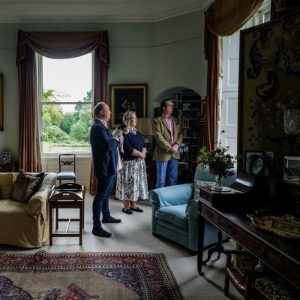Independent jewellers realise potential of physical stores

Fernando Jorge has had a busy week. After making his debut at Salon Art + Design fair in New York, which drew to a close on Monday, the Brazilian jewellery designer has been putting the finishing touches to his first US showroom, a by-appointment space in the city’s Chelsea neighbourhood.
And this opening, which follows the expansion of Jorge’s London showroom last month, forms part of a wave of retail launches by independent jewellers. On Wednesday, Sophie Bille Brahe opened an appointment-only boutique on New York’s Madison Avenue, the brand’s first store outside Denmark. Then, on the same street next spring, diamond brand Jessica McCormack will launch its first store outside London.
“The business is changing,” says Jorge, whose latest opening is driven by demand from clients in the US, where the brand already had a team handling wholesale. “People are buying more directly with the brands and each brand is responding in their own way.”
New openings by jewellery makers increased 30 per cent last year, according to property group Savills’ Global Luxury Retail 2024 Outlook. Federica Levato, senior partner and Emea leader of fashion and luxury at consultancy Bain & Company, says that, by launching their own stores and showrooms, independent jewellers are responding to two trends in luxury retail: a return to physical and personal, rather than online, experiences; and a shift from wholesale to retail seen over the past 15-20 years.
It is about offering “a 360[-degree] brand experience”, she says. “The human touch in luxury brands is so relevant to develop, not only to sell a product . . . but really to establish a long-standing relationship with the customer and nurture the loyalty.”
Levato says that, while wholesale is “an additional risk” for brands as they don’t have full control of sales and pricing, it still has a “fundamental role” in jewellery by giving young and small brands a platform. However, there have been some high-profile closures of multi-brand retailers recently, including ecommerce platform Matches.

Jorge thinks the “dissolution of centralised taste makers” has led people to seek a direct experience with brands. “The publications first, then the big ecommerce multi-brands [retailers] are losing their power [in] telling people what to like,” he says.
Jorge says people now find “good things” in the “virtual noise” of social media and build relationships with brands that way. That means he has had to not only rely on his designs but also tell the brand’s story through social media channels. “The brands who were responsive and understanding of this [different] dynamic have benefited from it,” he says.
Goldsmith Susannah King’s business took off after she went viral on TikTok. But, wary of the “uncertain landscape” of social media, she opened a bricks-and-mortar presence in London’s Kensington in August. It now accounts for 30-40 per cent of sales, she says, and has expanded the UK client base for her brand, whose market was previously largely in the US.


A shop is a big investment, though. The formerly ecommerce-first brand Otiumberg chose Holland Park in west London as the location of its first store, which opened last month, after being priced out of the prime central area. Yet, according to Savills, prime headline rents in the city’s Bond Street were 17 per cent lower in the fourth quarter of 2023 compared with the same period in 2019, while those in New York’s Madison Avenue were down 27 per cent in the same timeframe.
Anthony Selwyn, co-head of global retail at Savills, says the impact of the pandemic on the retail rental market gave brands “better opportunities” to open stores, although rents have now returned to pre-pandemic levels.
Selwyn says that, on the back of the pandemic, brands better understand their online platforms, and domestic and tourist markets, and there has been a rise in ecommerce brands opening stores as they seek growth.
Online sales remain “the engine of the business” at Otiumberg, says co-founder Rosanna Wollenberg, but she thinks it is important to have multiple sales channels. The brand has a network of stockists in addition to its Holland Park store.
The store is an “expression of the brand” that gives Otiumberg legitimacy, Wollenberg says. The new space, which also houses the company’s headquarters, is “a launch pad” for its bricks-and-mortar strategy to open one or two more stores within the next three years, she adds. The plan is driven by the belief that it is important for customers to “touch and feel” the jewellery, she explains.


Meanwhile, at Minka Jewels, sales have increased 12-15 per cent since the brand opened its first by-appointment showroom, in London’s Mayfair, in April. “[Jewellery] is a considered purchase, so a lot of people don’t feel comfortable necessarily buying directly on the website,” says founder Lucy Crowther. Seventy per cent of her business is bespoke work and, while her website is a helpful tool for people to view her collections, style and prices, she says most want to build a relationship in person and see “pieces in the flesh”.
Scottish jeweller Romany Starrs’ online sales peaked during the pandemic but have halved since 2022, which she partly attributes to introducing more fine jewellery. Her new shop, opening in The Village, East Kilbride, next Thursday, will feature workbenches inside a glass cube so customers can watch pieces being made, providing both a “bit of theatre” and “a trust factor”.
This should provide the “shopping experience” Starrs thinks customers for fine jewellery are seeking. “They’re looking for something different than what everyone else can press a button and buy,” she says.
#Independent #jewellers #realise #potential #physical #stores






